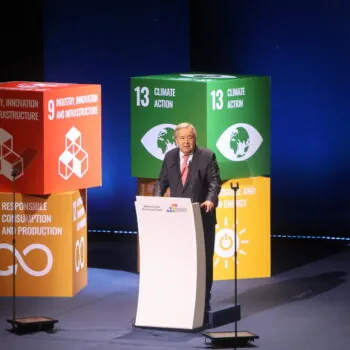While the INDC that Chile recently submitted to the UNFCCC might not yet represent a master plan of how the country will achieve its climate change goals, it does provide a solid foundation and position the country well to step up its efforts on climate action in an effective and strategic way.
Chile’s INDC includes a sector-wide 30% carbon intensity reduction target by 2030 compared to 2007. Like many other countries, Chile has also included a conditional target of a 35-45% carbon intensity reduction, subject to the provision international grants. Additionally, Chile’s INDC addresses adaptation, capacity building, technology transfer and finance.
Unlike some other countries, such as India or Tunisia, Chile does not include a quantification of its financial needs to tackle climate change. Instead, Chile’s INDC announces its intention to develop a National Finance Strategy by 2018. Through their work with E3G, the Chilean Ministries of Environment and of Finance have embarked on the process of developing this Strategy.
E3G’s work on National Finance Strategies emerged out of the recognition that there is a mismatch of resources and expectations between providers and recipients of climate finance at both the international and national levels, and therefore countries need to determine and define their financing needs through a strategic, bottom-up approach. Successful development of National Financing Strategies requires strong stakeholder engagement and collaboration between the public and private sector. Due to the scale of investment required, it is important that public sector interventions result in programmes that attract private sector investment.
Chile acknowledges that having a good assessment of its financing needs will help in determining an optimal financing portfolio as well as the sustainable provision of public and private resources. By developing a National Finance Strategy, the Chilean government will gain deeper understanding of 1) its financing needs; 2) the different sources which provide the finance, including public national and international, as well as private sources; and 3) the measures and instruments which will help mobilise and leverage private capital efficiently and effectively.
E3G’s work with the Chilean Ministries also includes a deep dive into sectors with high relevance for mitigation and adaptation, including the electricity sector and the agricultural sector.
In the electricity sector, there has been a push towards renewable energy, especially solar. Chile recently reached the global top ten of the renewable energy country attractiveness index[1]. Installed power capacity from non-conventional renewable sources (excluding large hydro which is approximately 32% of installed capacity) grew from around 5.5% in 2013 to around 12% in 2015. While currently installed renewable energy capacity reaches round 2,500 MW, there are now another 20,000 MW in the pipeline[2]. A Green Paper on a new energy policy sets a goal of at least 70% of renewable energy in the electricity mix by 2050, with emphasis on solar and wind.
The growth of renewable energy in the electricity mix has not been the result of fiscal government support schemes such as feed-in tariffs, but rather a change in regulation of the energy auctioning system which enables intermittent renewable energy technologies to compete with fossil fuel power plants. Following a successful December 2014 auction, in the latest bid, renewable energy companies completely outstripped conventional generators who failed to win any contract and average bidding prices fell by 40%[3]. Whereas these developments are very positive, there are now a large number of projects which cannot yet be connected to the overloaded grid. The government is addressing this issue by planning the interconnection of Chile’s two main grids by 2018, but stronger coordination with project developers might be needed to align project construction with grid expansion planning and avoid investors pulling out due to uncertainty. Also in the case of other renewable energy technologies a stronger coordination between public and private sector is needed to attract investment. Geothermal energy is very underdeveloped and lacking in finance despite the availability of the resource. Also distributed small scale renewables still face problems attracting finance, mainly due to their size and higher transaction costs.
The agricultural sector still faces a lack of access to finance for climate change adaptation and resilience. In Chile, agriculture accounts for 8.5% of GDP and is characterised by a large proportion of small scale farming. The main climate change threat is the lack of water. Therefore funding would be required for new irrigation systems and to increase resilience against losses caused by climate change. However, appropriate insurance instruments do not yet exist in Chile on a sufficient scale and access to bank financing is limited, especially for small farmers.
Furthermore, as of 2017 Chile will likely lose its eligibility to receive Official Development Assistance (ODA), as it has exceeded the high-income country threshold.
Hence, the identification and mobilisation of (new) sources of finance is critical in the context of moving towards a low-carbon and climate resilient pathway, and for achieving and even increasing the ambition of climate change targets as set out in the INDC.
Overall, as Chile’s INDC emerged through both a high-level process involving all relevant ministries as well as a public consultation involving civil society, there has already been a mainstreaming and increase in awareness of climate change within the country’s government, economy and society. Building on this momentum and working towards a strategic approach of identifying financing needs and mobilising diverse sources of finance will empower Chile to effectively turn its climate commitments into action.
[1] Ernest and Young, Renewable energy country attractiveness index, September 2015 [2] CIFES Reporte ERNC Octubre 2015 [3] Diario Financiero, Empresas ERNC son las grandes ganadoras de licitación eléctrica y dejan en el camino a generadoras convencionales, 26 de Octubre

